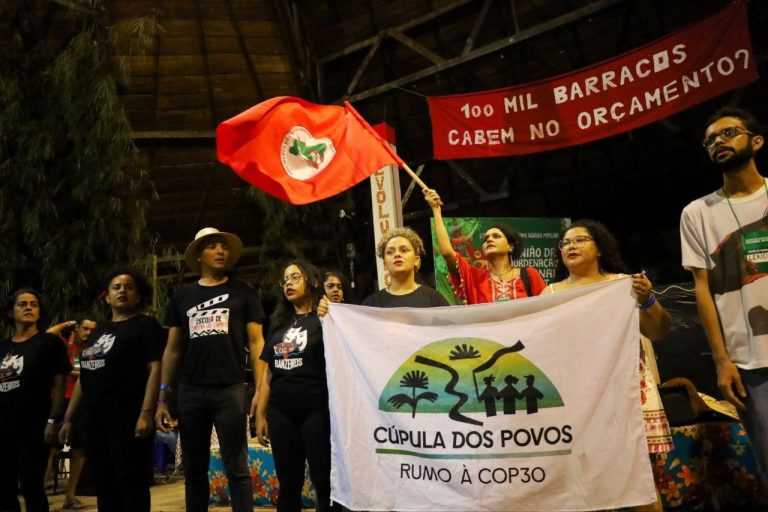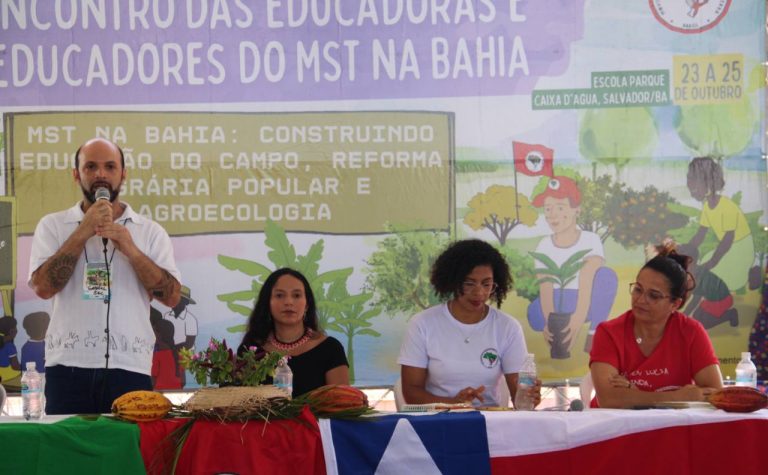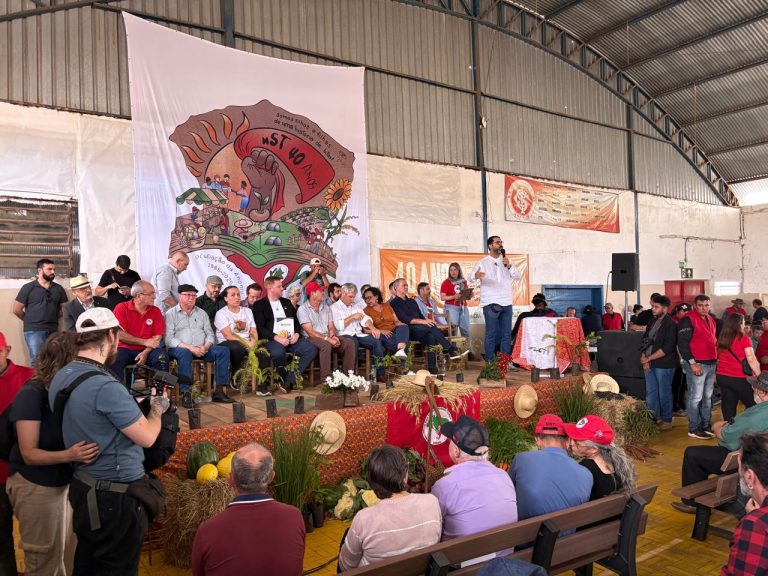Agrarian Reform
During Red April, Brazil’s MST restates the importance of agrarian reform
The month marks April 17, when the International Day of Peasant Struggle is remember the 21 rural workers murdered by the military police in the 1996 Eldorado dos Carajás massacre in Pará
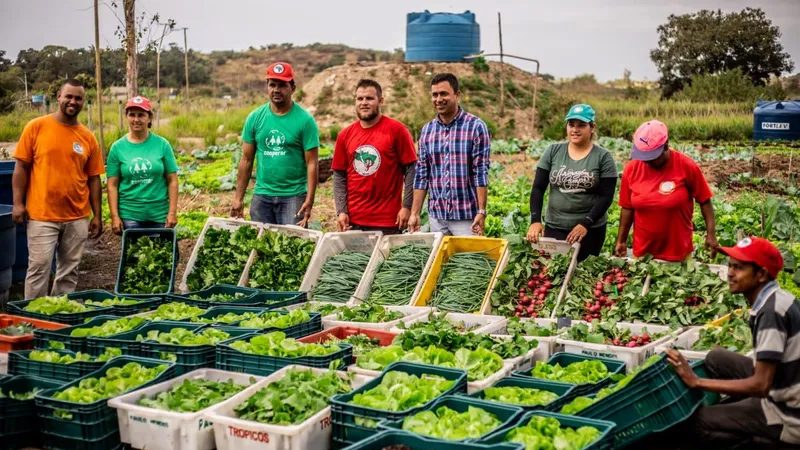
From Brasil de Fato
Under the slogan “Occupy to feed Brazil,” the Landless Rural Workers’ Movement (MST), is organizing across the country for the National Day of Struggle in Defense of Agrarian Reform, which takes place during what organizers call Red April, a month which includes marches, occupations, training activities, solidarity activities, and opposition to land concentration in Brazil.
The month marks April 17, when the International Day of Peasant Struggle is celebrated to remember the 21 rural workers murdered by the military police in the 1996 Eldorado dos Carajás massacre in Pará.
The movement presents Agrarian Reform as an urgent and necessary alternative to produce healthy food for the rural and urban populations, combat hunger, and advance the country’s development in the agrarian, social, economic and political context.
“This year’s national day [of Peasant Struggle] in April has the slogan ‘Occupy to feed Brazil’, understanding that only agrarian reform is capable of ending hunger in our country, and pointing out the urgency and need for the Brazilian state to carry out agrarian reform,” explains Margarida Maria, MST’s national leader.


The day gains even more strength among workers, considering that this is the third consecutive year the federal government has not allocated land for Agrarian Reform, intensifying social inequalities and conflicts in the countryside.
“Workers from urban and rural areas will join the debate so we can build a national day with various actions in all Brazilian states. By doing so, we can talk to society that we can only contribute to the fight against hunger if [access to] land is democratized for everyone living in the countryside,” Margarida added.
Pedagogical Camp for Landless Youth – Oziel Alves
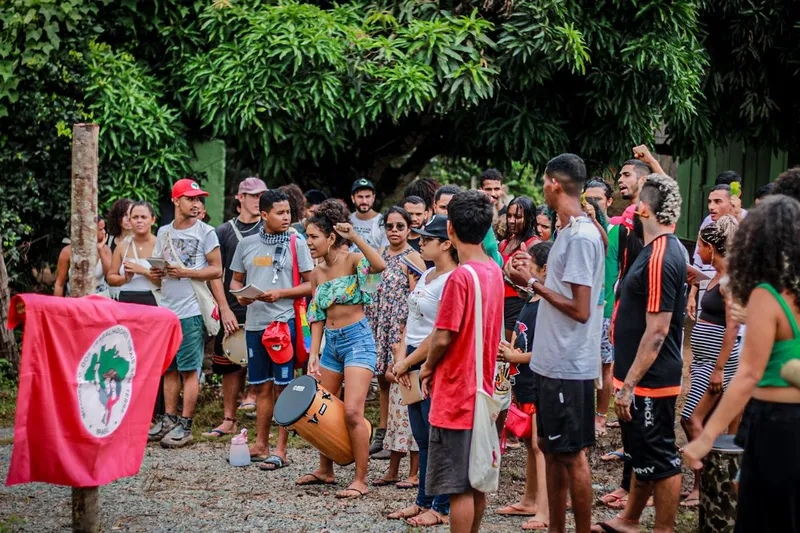
In the state of Pará, the day is even more intense, with the presence of relatives of the Eldorado dos Carajás martyrs in the camp set up from April 10 to 17, which promises to remember Oziel and all those who gave their lives in the struggle for a more dignified, just and equal society.
This is the 18th edition of the “Pedagogical Camp of Landless Youth – Oziel Alves,” which every year is set up in Curva do S, the place where the massacre took place and which is now one of Pará’s historical and cultural heritage sites.
“Oziel was 17 at the time and brutally murdered by the police in Curva do S. The camp bears Oziel’s name because it brings that youthful character of a rebellious young man, who didn’t submit to this death project imposed by the state on people who fight for their rights. This is therefore a rebellion, but a revolutionary one,” explains Romario Rodrigues, the MST’s youth leader in state of Pará.
The camp will remain for 7 days, ending on April 17, reinforcing the intent of the International Day of the Struggle for Land, with young people from the Amazon region, guests from various states, and international support from La Via Campesina.
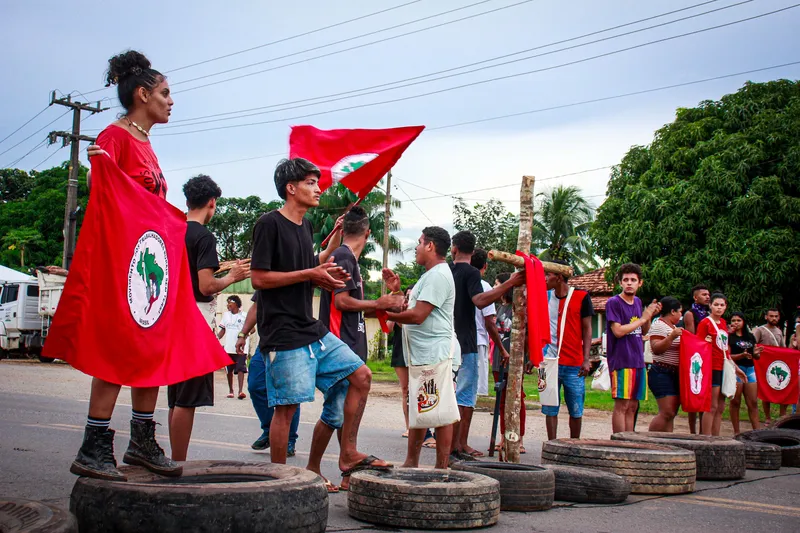
With around 250 young people, this year’s meeting is more formative to boost youth organization and participation in the MST’s 7th National Congress, to be held from July 15 to 19 in Brasilia, Brazil’s capital city.
“We will work on various methodologies, from films and presentations to lecturers by names with historical importance like Seu Laurindo, Dona Maria, Gouveia, who survived the massacre and still participate with us in our camps,” says Rodrigues.
In addition to the 21 recorded and internationally recognized deaths, the Pará State Military Police mutilated another 69 people who were on the PA-150 highway (currently BR-155 highway) while they were marching to demand the expropriation of the Macaxeira farm and the implementation of a broad Agrarian Reform agenda in the south and southeast of Pará.
Marked by the massacre, survivors and MST activists continue to fight for justice and against impunity in a reality of violence in the countryside, which restates the importance of keeping alive the memory of what happened and the need for permanent struggle.
“So that from then on our youth, especially the young people who are joining us now, can actually know what the massacre was, from the perspective of those who really participated, from the movement that experienced it, and not from the perspective of the bourgeois media that it only discriminates against the movement and even puts us at fault in that process, and we know that weren’t at fault,” concludes the MST Youth leader.
This article was first published on Brasil de Fato.

